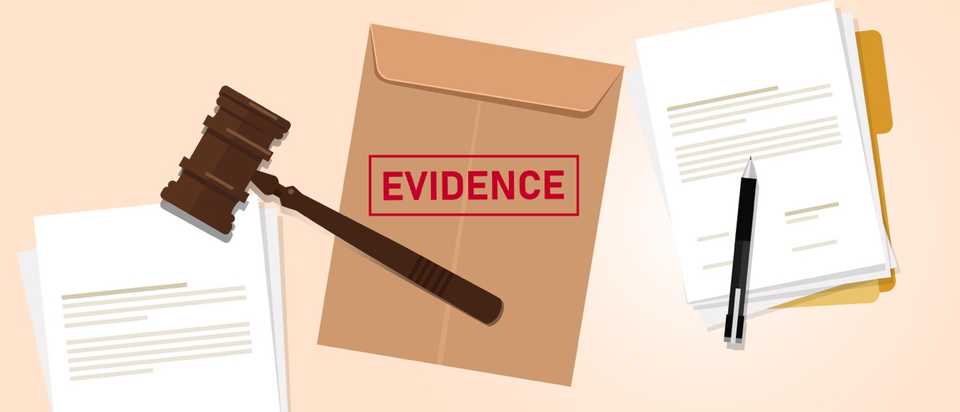The act of theft is universally condemned, and everyone knows that stealing is a criminal offence. However, not everyone is aware that theft under $5,000 and theft over $5,000 have different consequences under the Criminal Code.

Therefore, in cases where theft charges involve sums under $5,000 in Ontario, what are the consequences of being found guilty, and are there any circumstances in which a defence can be pleaded?
| In this article, JuriGo explains the legal consequences of theft under $5,000 in Ontario and presents the defences that can be pleaded by a criminal lawyer. |
|---|
What constitutes the offence of theft under $5,000?
In accordance with section 322 of the Criminal Code of Canada, theft is defined as the act of an individual unlawfully appropriating or converting anything belonging to another person without lawful authority. This broad definition encompasses various scenarios and actions that result in the deprivation of the rightful owner's possession or use of their property.
The scope of theft extends beyond mere physical possession of property. It includes actions such as using the stolen property as collateral, imposing conditions on its return, or rendering it irretrievable. Additionally, the act of moving property with the intent to steal, even if the theft is not completed, constitutes theft under Canadian law.
- Deprivation of Ownership
Central to the concept of theft is the deprivation of ownership rights from the rightful owner. Whether the property is taken temporarily or permanently, the key consideration is that the owner is deprived of their right to possess or use their property without their consent.
Theft can manifest in diverse forms, ranging from petty shoplifting to more sophisticated schemes involving complex financial transactions. Regardless of the method or magnitude, the underlying principle remains the same: the wrongful appropriation of another person's property.
What elements need to be proven for a theft under $5,000?
In a criminal trial, proving a theft charge requires the Crown to establish three key elements beyond a reasonable doubt.
Proof "beyond reasonable doubt" means almost total certainty of guilt, leaving no room for reasonable doubt. This standard is much closer to absolute certainty than proof established on a balance of probabilities, which only requires that the event is more likely than not.
Here are the three elements that the Crown must prove beyond a reasonable doubt for an accused to be found guilty of theft under $5,000:
| Elements to be proven | Explanation |
|---|---|
| Identity of the thief | The prosecution must first establish the identity of the individual accused of committing the theft. This includes providing evidence linking the accused to the alleged criminal act, such as eyewitness testimony, surveillance footage, or forensic evidence. |
| Material element (Actus Reus) | The material element or actus reus refers to the physical act or conduct that constitutes the offence of theft. In the context of theft, this involves proving that the accused appropriated or converted someone else's property without lawful authority. This can include actions such as taking, obtaining, or withholding possession of the property. |
| Moral element (Mens Rea) | The prosecution must establish the mens rea, or the mental state of the accused at the time of the alleged theft. This involves demonstrating that the accused acted with the specific intent to deprive the rightful owner of their property permanently or temporarily, and that they were aware that their actions were unlawful. The mens rea requirement ensures that criminal liability is not imposed on individuals who inadvertently or mistakenly take possession of property. |

Additionally, the Crown may also need to establish the amount involved in the theft.
This is crucial because the consequences for theft under $5,000 differ from those for theft over $5000. The value of the stolen property plays a significant role in determining the severity of the offence and the potential penalties upon conviction.
Theft under $5,000 is considered less serious than theft over $5,000, leading to different sentencing outcomes. Therefore, accurately determining the value of the stolen goods is essential in ensuring that the appropriate charges are laid and that the accused faces the corresponding legal consequences.
What are the consequences of being found guilty of theft under $5,000?
If convicted of theft under $5,000, it will be recorded on your criminal record regardless of the value of the stolen item, whether it's a dollar or $4,999. However, the value of the stolen goods plays a crucial role in assessing the case's severity. The Crown often drops charges, particularly for first-time theft offences involving low-value items.
It's crucial to note that theft under $5,000 falls under the category of a hybrid indictable offence in Canada. This means that it can be prosecuted either as a less serious summary offence or as a more serious indictable offence, depending on the circumstances and the discretion of the Crown prosecutor.
- If prosecuted by indictment, the maximum penalty is two years' imprisonment.
- If prosecuted summarily, the maximum penalty is six months' imprisonment.
This flexibility allows the courts to consider the severity of the offence and the individual circumstances of the case when determining the appropriate penalty.
Aggravating factors for sentencing:
Upon conviction, the judge considers several aggravating factors that could lead to a maximum sentence. These include:
- Prior criminal history of the defendant
- Any pending charges against the defendant
- The total value of the stolen goods (example was it $50 or $4,000)
- The identity of the victim (example was it a vulnerable person)
- The defendant's conduct upon being apprehended
- Any mental or medical conditions present
- The motive behind the theft
- Additional pertinent personal attributes
Impact on record:
Having a criminal record for theft under $5,000 can have significant and long-lasting consequences. A criminal record can severely limit employment opportunities, as many employers conduct background checks and may be hesitant to hire individuals with a history of theft.

Additionally, a criminal record for theft can impact immigration status, potentially leading to difficulties with visa applications or even deportation in some cases. Moreover, individuals with a theft-related conviction may face restrictions on travel, including difficulty entering certain countries such as the United States of America.
Police procedure:
When individuals are accused of theft under $5,000, they may face immediate consequences from law enforcement, such as fingerprinting during arrest. This information becomes part of the individual's criminal record and may be used in future legal proceedings.
In summary, theft under $5,000 carries both legal and personal consequences that can have a significant impact on an individual's life. It is important for individuals facing charges related to theft to seek legal counsel and understand their rights and options within the legal system.
What defences can be presented for theft under $5,000 charges?
When confronted with accusations of theft under $5,000, it's crucial to meticulously tailor your defence strategy to the unique circumstances and evidence of your case. Here, we outline seven potential defences that can be asserted for such charges:
Lack of mental intent
One of the primary defences in theft cases involves demonstrating a lack of the required mental intention, known as mens rea. This defence hinges on proving that the accused did not intend to commit the theft. For instance, accidental possession of an item or absent-mindedly leaving a store without paying may constitute a lack of intent.
| Example: For instance, imagine a scenario where Peter, a distracted shopper, absent-mindedly places a small item in his pocket while browsing a store. Later, upon exiting the store, he realizes his mistake but inadvertently forgets to pay for the item. In this situation, Peter's unintentional act of placing the item in his pocket and his subsequent forgetfulness to pay may constitute a lack of intent. This defence argues that Peter's actions were not driven by a conscious desire to commit theft, but rather by a momentary lapse of attention. |
|---|
Colour of Right
According to section 322(1) of the Criminal Code, individuals may employ the defence of "colour of right" when they genuinely believed they had the legal right to possess the item in question. This defence comes into play when the accused took the item under the honest belief that they had permission or entitlement to it.
| Example: Consider a hypothetical scenario where Mary borrows her neighbour's lawnmower with the understanding that she has permission to use it for lawn maintenance. However, due to a miscommunication, the neighbour accuses Mary of theft when she takes the lawnmower without explicitly seeking permission each time. In this situation, Mary's belief that she had the right to use the lawnmower constitutes the defence of "colour of right." To strengthen this defence, Mary’s legal counsel would emphasize her genuine belief in her entitlement to use the lawnmower based on the prior arrangement with her neighbour. Her lawyer can present evidence of the neighbour's past consent or any communication indicating permission to borrow the lawnmower. By highlighting Mary's honest belief in her entitlement to the item, her defence aims to establish a compelling case for the application of "colour of right." |
|---|
In essence, the defence of "colour of right" underscores the importance of genuine belief and honest intention in determining culpability. Through careful examination of the circumstances and presentation of persuasive evidence, individuals like Lisa can assert their innocence and mitigate the consequences of theft charges.
Identity Not Established
In cases where someone is falsely accused of theft, questioning their identity becomes the primary defence strategy. This is especially evident in cases where surveillance footage or witness testimony are pivotal. By questioning the accuracy of identification, the defence aims to weaken the prosecution's case.

Indeed, through a thorough examination of the evidence presented, a lawyer can raise doubts about the accused's identification as the perpetrator. If the evidence fails to definitively establish the accused's identity, it creates reasonable doubt regarding their involvement in the alleged offence, thereby undermining the charges.
Furthermore, a skilled lawyer may present alibis or corroborating evidence demonstrating that the accused was elsewhere at the time of the alleged offence, further challenging the prosecution's assertion of identity. By strategically raising doubts about the accused's identity, the defence aims to create reasonable doubt in the mind of the judge, potentially resulting in a verdict of not guilty.
Title for the Item
A defence centred on rightful ownership of the item asserts that the accused had a legal entitlement to possess it, thereby justifying their actions. This defence becomes particularly relevant in situations where the accused claims ownership of the item, such as retrieving personal property from another party without any fraudulent intent or wrongdoing.
| **Example:**For instance, consider Lydia, who lends her bicycle to her friend Steven, expecting it back after a week. However, several weeks later, Lydia finds out that Steven has lent the bicycle to someone else without her consent. Frustrated, Lydia retrieves her bicycle from the person Steven lent it to, but then she gets accused of theft under $5,000.In this scenario, Lydia’s defence could argue that she had a rightful ownership claim to the bicycle, as she had initially lent it to Steven under specific conditions. Therefore, her actions were not theft but rather the exercise of her legal entitlement to retrieve her property. |
|---|
This defence strategy relies on demonstrating that the accused genuinely believed they had the right to possess the item in question, and their actions were consistent with that belief. By asserting their rightful ownership and lack of fraudulent intent, the defence aims to challenge the prosecution's allegations of theft and justify the accused's conduct in the eyes of the court.
Duress
The defence of duress comes into play when the accused finds themselves committing an offence against their will, typically under duress, coercion, or the threat of immediate harm. Section 17 of the Criminal Code provides that individuals can be excused from criminal liability if they reasonably believed that non-compliance would lead to imminent danger to themselves or others.
This defence acknowledges that individuals should not be held responsible for actions taken under the threat of immediate harm. It recognizes the significant impact external pressures can have on behaviour, highlighting the need to consider the circumstances surrounding the offence.
Police Misconduct
Excessive or unlawful actions by law enforcement during investigations can seriously undermine the prosecution's case. Defence lawyers carefully review how evidence was collected to find any police mistakes or misconduct. This scrutiny involves checking if the police officers followed the correct procedures and respected the rights of individuals during the investigation.

For instance, if evidence was obtained through an illegal search or seizure, such as entering a suspect's property without a warrant, it may be deemed inadmissible in court. Similarly, if law enforcement used coercive tactics to obtain confessions or manipulate witnesses, this could also compromise the integrity of the evidence.
By challenging the legality of evidence collection, defence lawyers aim to show the court that the prosecution's case is tainted by procedural irregularities or violations of constitutional rights. If evidence is found to have been obtained unlawfully, the defence may file motions to suppress it. If successful, this could result in dismissed charges or a weakened prosecution case at trial.
The Court Proceedings Were Unreasonably Delayed
According to section 11(b) of the Canadian Charter of Rights and Freedoms, individuals charged with an offence in Canada have the right to have their case heard within a reasonable time. The Supreme Court of Canada's decision in R. v. Jordan established specific timelines, requiring trials to be completed within 18 months after charges are laid.
If the case exceeds this timeframe, a lawyer can request a stay of proceedings for delay. If the judge determines that this right has been violated, the charges could be dismissed.
You have been arrested for theft? JuriGo can help you find a lawyer specialized in criminal law!
It's strongly advised for anyone facing theft accusations to seek the assistance of a criminal lawyer.
These lawyers possess the skills to meticulously assess the case, tailor a defence strategy, and advocate effectively for the accused. Given the intricacy of theft charges under $5,000, a deep understanding of legal principles and procedural nuances is vital.

JuriGo provides a simple, fast, and free solution for finding a lawyer specializing in criminal law! Our service is confidential, free of charge, and requires no commitment.
Simply fill out our request form, detailing your situation, and we will promptly connect you with a criminal lawyer in your area. Get started on your defence quickly and easily with JuriGo!